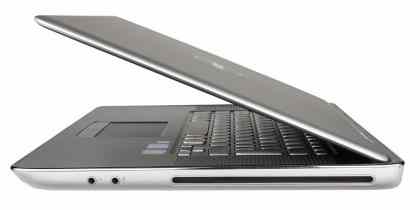At first glance, you could easily mistake the XPS 15z for a MacBook Pro; the slim alloy chassis, slot-loading optical drive and LED battery indicator all look incredibly similar to Apple’s iconic laptop. However, rather than simply being a good copy of the MacBook, the 15z is a fantastic laptop in its own right.
Constructed from an aluminium and magnesium alloy and measuring less than 25mm from top to bottom, the chassis is simply gorgeous and incredibly sturdy. A distinctive screen hinge lies on the top, rather than at the edge of the chassis. It looks great, especially with the power LED forming part of the design, but it limits the amount of tilt available for positioning the screen. Thankfully, viewing angles on the gloriously detailed Full HD display were better than average, with minimal loss of contrast.

As the name suggests, the 15z has a 15.6in screen; at its native 1,920x1,080 resolution, text can appear very small. Thankfully, Dell sets the default Windows text size to 125% in the factory, so we could easily read file and folder names straight away. Adding to the incredibly sharp picture is a very bright backlight. It's rated at 300cd/m2 compared with the 200cd/m2 of most laptops. Contrast is also great, but it isn't all good news. Colours were much too vibrant at the default settings and the glossy finish is also highly reflective.
We were hoping that the 15z would be able to match the excellent speakers found on the regular XPS 15, but unfortunately they weren’t quite as impressive. Music still sounded clear, even at maximum volume, and was easily loud enough to fill a medium-sized room, but bass was sorely lacking. Even so, the overall sound quality was still very high for a laptop.

Because the chassis is much slimmer than the regular XPS, the 15z is limited to a dual-core processor, but the second generation Intel Core i7-2620M is still powerful enough for almost every task. Usually clocked to 2.7GHz, Turbo Boost can increase this to 3.4GHz for even more performance. Paired with 8GB of memory, it sailed through our multimedia benchmarks with an overall score of 61. Unless you buy a laptop with a quad-core processor, it’s difficult to get better 2D performance.
